MARKET OVERVIEW
The Global Chimney Liner market is a critical part of the overall chimney systems industry, ensuring efficiency, safety, and sustainability in residential, commercial, and industrial heating systems. This market, forming an integral part of the whole construction and house improvement industry, is expected to witness tremendous shifts with the advancement of technology in developing materials and installing techniques. With factors such as increased awareness in building safety and energy-efficient heating solutions, it is expected that the demand for chimney liners will rise steadily with people continuing to make use of wood-burning stoves and fireplaces.
As the market matures, various materials applied, such as stainless steel, clay, and cast-in-place liners, can change. Technological enhancements are likely to offer consumers higher-quality liners, offering better protection against heat, corrosion, and buildup of hazardous gases. Stainless steel liners will remain dominant due to their durability and ability to withstand high temperatures, though other materials like ceramic and aluminum may see niche uses for specific types of installations.
Advanced manufacturing techniques and more customized and efficient products are what consumers will be demanding in the years to come. The advancement will extend from improving the quality to making chimney liners easier to install. Installation is expected to be less invasive, as professionals will employ modern techniques and tools that reduce installation time and lower the cost to once again encourage homeowners to place a precedence on chimney safety and efficiency. The Global Chimney Liner market will be molded further by the focus on eco-friendly materials and sustainable building practices.
Increased environmental consciousness will increase the demand for liners, which will further contribute to air quality improvement, ensuring that the toxic gases are well vented from the residential and commercial properties. This development will drive the growth of liners that offer advanced filtration systems or higher resistance to corrosion, which will be highly valued by consumers looking for both safety and environmental benefits. The regulatory landscape surrounding the use of chimney liners is likely to tighten in the near future, requiring stricter safety standards and codes of practice.
With this change, homeowners and business owners will increasingly turn to certified professionals for installations that meet these growing regulations. As a result, the need for specialized knowledge and expertise in the installation and maintenance of chimney liners will increase, leading to new market opportunities for businesses offering training and certification services.
The Global Chimney Liner market will look toward expansion due to the increased recognition of the importance to maintain a functional and safe chimney system by individual and company alike. Advances in materials, technology, and installation practices will define a more aggressive and innovative market. The increasing demand for more efficient and environmentally friendly chimney liners will address the requirements of the increasingly conscious consumer, making this field an exciting space to watch in the future years ahead.
Growing urbanization and a rise in the number of green building practices will be able to continue growing the market as it offers newer solutions to satisfy the safety and efficiency demands both for residential and commercial properties. The focus of the cleaner, safer environment will propel the Global Chimney Liner market ahead, offering boundless opportunities for growth and innovation.
Global Chimney Liner market is estimated to reach $235.01 Million by 2032; growing at a CAGR of 3.8% from 2025 to 2032.
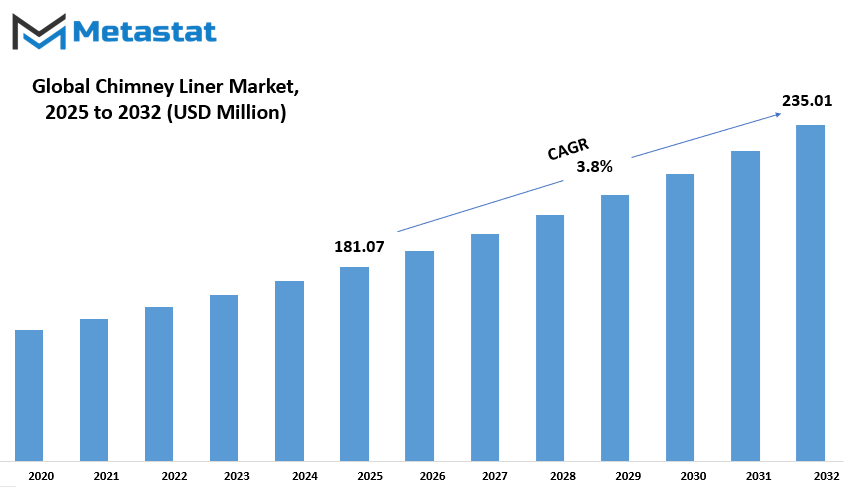
GROWTH FACTORS
The global chimney liner market is growing steadily with greater awareness of proper chimney ventilation. Tough security standards have made it necessary for both commercial and residential settings to install high-quality liners that will provide a safe and effective outlet for smoke and gases. Harsh policies by governments and regulatory bodies in various regions to check fires and minimize air pollution have compelled the customer to invest in the safety of reliable chimney liners. So, manufacturers are continuously developing products that are compliant with such regulations but provide improved safety and efficiency. The increased desire for energy-efficient heating systems is also adding to the growth of the market.
Many modern heating appliances, such as furnaces and wood stoves, work best when using compatible liners. These liners improve proper airflow while stopping the building up of deleterious substances within them, typically enhancing the efficiency of a heating system. There is growing interest in saving energy and emissions, and this leads to increased demand in compatible yet efficient chimney liners. This trend is particularly visible in regions where sustainable and cost-effective heating solutions are becoming a priority. However, there are challenges that may slow the growth of the market. The major challenge is the installation and maintenance costs.
The cost of installing chimney liners is relatively high, and many consumers are likely to avoid them because of the upfront costs and the requirement for ongoing servicing. It goes with professional installation and is, hence, expensive as it has to be properly fitted. Other home owners are not aware of the benefits to be gained through chimney liners hence delaying or abstaining from getting one. Awareness about chimney liner advantages is minimal in some areas.
Developed countries have a standard system of guidelines for the same with higher consumer knowledge. In many areas, such awareness is yet to be attained. Many people are still uninformed about how unlined or improperly lined chimneys can ultimately lead to inefficient heating as well as several fire hazards and damage, so the gap in knowledge has the potential to be filled with education and marketing opportunities for market expansion.
This future seems promising to the market as consumers will demand a lot of green and durable liners made of materials such as stainless steel and ceramics. Consumers would require long-term solutions that come with better performances and sustainability benefits. Manufacturers capable of producing durable, high quality, and friendly-to-the environment products will thrive through this trend. As technology advances and awareness improves, the chimney liner market is expected to expand, offering safer and more efficient solutions for residential and commercial heating systems.
MARKET SEGMENTATION
By Type
In relation to the requirements for energy-saving and safe ventilative systems both for residential as well as for commercial structures, Global Chimney Liner market experiences a steady rate of growth. Installing a chimney liner prevents the damages that heat cause to the structural fabric and doesn't let hazardous emissions from the liners get into living areas. Advancing awareness for these benefits triggers further adoption towards using chimney liners. Besides, safety and environmental issues are compelling governments to enforce regulations on this market and thus fuel the market further.
The types of materials vary for chimney liners that are suited for a particular requirement. There are Stainless Steel Chimney Liners, Aluminum Chimney Liners, Ceramic/Clay Chimney Liners, and Flexible Chimney Liners available in the market. The majority share of the market is constituted by stainless steel chimney liners with the $90.25 million, because they resist high temperature levels and are strong and durable.The liners have been applied very widely in modern heating systems and can be found in most houses and business establishments.
In contrast, aluminum chimney liners are relatively cheaper and lighter; hence, they are commonly used together with gas appliances. They are much less durable, however, than stainless steel liners. Ceramic/Clay liners have been in existence for thousands of years, particularly in older buildings, as they are excellent insulators. A Flexible Chimney Liner is very flexible, hence very easy to install in bendy or strange shaped chimneys.
Market forces have also been influenced by increasing demand for energy-efficient solutions. Homeowners and businesses look for ways to improve heating system efficiency while at the same time ensuring safety. Chimney liners help enhance appliance performance by ensuring proper airflow and reducing creosote buildup, which can cause chimney fires. As such, their importance continues to grow both in new construction and renovations.
Regions where strict building codes and awareness toward fire safety have been observed significantly dominate the North American and European markets. It is also furthered by a strong focus on home improvement projects and the existence of well-established manufacturers. Asian-Pacific regions also experience growth on account of high disposable income and growing urbanization in the region where more people have opted for modern heating solutions. Developed nations are also in demand of chimney liners due to the implementation of safety regulations by governments of these nations.
In recent years, chimney liners have become increasingly popular as new innovation in technology brings better quality and efficiency into manufacturing. Usage of corrosion-resistant materials and improvements in insulation techniques is a positive step for the industry. As consumers start to realize that safety, sustainability, and energy efficiency are just as important, the market will continue to increase for chimney liners, offering much better solutions to homes and commercial buildings around the globe.
By Material
This industry of Global Chimney Liner is affected by many factors determining growth and demand in various regions. Material used for the liner is the most crucial feature in the product of chimney liners, as they very largely contribute to the efficiency, durability, and overall performance of a chimney liner. The market exists in three varieties, namely, Single-Wall, Double-Wall, and Triple-Wall, all offering unique advantages tailored to different applications.
Single-Wall chimney liners are one of the widely preferred options. They cost less and are manufactured mainly from stainless steel or aluminum, thus very flexible and easy to install. However, they do not insulate as other configurations might offer, making them more ideal for environments where additional insulation is not necessary. They are still viable for many consumers despite their weaknesses, mainly because they are cheaper and more accessible. Double-Wall chimney liners have better insulation and durability than the Single-Wall variant.
It is a two-layer metal structure with an insulating layer between the two. It helps in retaining heat and generally enhances safety. These liners are very useful for applications where retention of heat is crucial, thereby preventing condensation from building up and ensuring efficient chimneys. Their added durability makes them a preferred choice for many homeowners and businesses, as they offer a balance between cost and performance. Triple-Wall chimney liners represent the most advanced option among the three. They are designed with three layers of metal and more extensive insulation, thus proving to be highly efficient at maintaining temperatures and preventing heat loss.
These types of liners are especially appropriate for applications where there is a need for maximum insulation and security such as high-performance heating systems. Although they are usually pricier than the others, long-term advantages in energy efficiency and durability more than compensate for the higher prices. Factors that would drive the demand for chimney liners are mainly related to safety regulations, increasing installation of heating appliances, and awareness about energy efficiency.
Consumers and businesses aim to find solutions that ensure increased safety with maximum performance. Manufacturers are continuously working on innovations in the materials and designs of chimney liners to keep them aligned with evolving needs of the market. With the continually expanding market, the decision in Single-Wall, Double-Wall, or Triple-Wall liners will still be largely dependent upon specific requirements and budget considerations alongside the intended use. The understanding of these options facilitates informed decisions aligned with consumer requirements while ensuring both safety and efficiency of chimney systems.
By Installation Method
The Global Chimney Liner market is witnessing steady growth as more and more people are concerned about the safety of homes, the energy efficiency need, and the regulation by governments in terms of emission. In that regard, the liners have a great importance in the home's safety in terms of heat transfer to combustibles and preventing carbon monoxide poisoning. Therefore, with this ongoing trend, safety and efficiency in homes will increase the demand for chimney liners.
Market growth factors involve improvement in the technology of the materials, their cost-effectiveness, and easy installation. Among those preferred are the stainless steel liners since they are most durable, not corrosive, and can with-stand heat very well. Aluminium and clay linings are other available options on the market because different clients can select the linings depending on budget and matching requirements for any given heating system.
The market is further segmented by installation method into the DIY (Do-It-Yourself) and Professional Installation categories. The DIY category caters to the homeowners who prefer a cost-effective solution and possess the skills necessary to install chimney liners themselves. Manufacturers provide easy-to-install kits with step-by-step installation instructions to make it convenient for users who wish to undertake the procedure themselves.
Professional installation, however, remains the best for those who require professional service for proper fitting and adherence to safety standards. Professionals are experienced and have the right tools for complex installations, especially in older buildings or chimneys with special structures.
The other factor is the growth in renovation and remodelling projects in households and commercial buildings. Old chimney settings need to be replaced with liners for efficiency and safety. Also, due to increased usage of wood stoves and fireplaces as heaters, the demand for durable chimney liners resistant to temperature variations and moisture has augmented.
Government regulations and building codes have also played a role in shaping the industry. Many regions have strict guidelines on chimney liner installations to minimize fire hazards and air pollution. Compliance with these regulations drives the demand for reliable and certified chimney liners, ensuring safety and environmental responsibility.
Looking forward, the market is expected to grow further with technological innovations in materials and installation techniques. Sustainability and energy efficiency will continue to shape consumer preferences as more eco-friendly options are sought after. With an increased appreciation of the advantages of chimney liners among owners and business operators, the industry will continue to trend upward while absorbing new challenges and opportunities.
By End-Users
Rising global demand for energy-efficient and secure chimney systems promotes the Global Chimney Liner market. While the chimney liner plays a great role in maintaining a building structure against heat flow, it will save energy efficiently. The ever-growing awareness towards fire hazards as well as strictly regulating the safety criteria leads to investment by consumers as well as businessmen in quality products for better efficiency and safety in their chimney performance.
According to end-users, the Global Chimney Liner market is further segmented into two types: residential and commercial sectors. The majority of the market share goes to the residential sector, since homeowners are searching for better insulations and fire protection. In fact, more and more aged homes are undergoing renovation, where property owners have been opting for modern chimney liners to enhance the efficiency and achieve updated safety standards. Moreover, homeowners are more conscious of the energy savings achieved through high-performance chimney liners.
The commercial industry also accounts for a huge part of market expansion. Restaurants, hotels, and industrial buildings depend on liners for efficient handling of their heat and exhaust systems. Good ventilation is an absolute necessity in such establishments for health and safety requirements. In fact, many companies are looking at long-lasting, low-maintenance liners that comply with all industrial requirements.
The market is being shaped by technological advancements. Manufacturers are bringing in new materials and designs to make the product more durable and performative. Stainless steel liners, ceramic liners, and flexible options are in demand because they are strong and adaptable to the different chimney structures. Some companies are also going for eco-friendly solutions, producing products that reduce emissions and improve overall sustainability.
Regional demand for chimney liners is dependent on climate conditions, building structures, and regulatory policies. In colder regions, the chimney liners ensure that indoor heating is maintained with efficiency, which means higher adoption rates. In contrast, areas with strict emission norms and fire safety regulations see increased demand due to compliance requirements. Market players are expanding their reach by offering customized solutions that cater to diverse needs across different locations.
The competitive landscape of the Chimney Liner market consists of the presence of existing companies and new entrants to the market that are vying for market share. Leading manufacturers focus on the quality of products, affordability, and customer service to ensure they remain strong. Some businesses also use digital platforms to improve the distribution channels and reach a wider market.
Innovation and safety will be the factors that continue to drive demand as the market continues to evolve. Consumers and businesses will seek high-quality chimney liners that improve protection, efficiency, and environmental responsibility. The Global Chimney Liner market is expected to grow steadily over the next few years, fueled by increased awareness and support from regulations.
|
Forecast Period |
2025-2032 |
|
Market Size in 2025 |
$181.07 Million |
|
Market Size by 2032 |
$235.01 Million |
|
Growth Rate from 2024 to 2031 |
3.8% |
|
Base Year |
2024 |
|
Regions Covered |
North America, Europe, Asia-Pacific, South America, Middle East & Africa |
REGIONAL ANALYSIS
With rising fire safety awareness and increasing demand for energy-efficient heating systems, the global market for chimney liners is growing. A chimney liner is an important component in the system of a chimney, shielding masonry and adjacent areas from high heat and corrosion while optimizing the efficiency of ventilation. Increased emphasis on the safety of buildings would also mean higher demand for high-quality chimney liners.
Chimney liners include stainless steel, clay tiles, and aluminum in different materials used. Stainless steel has gained a strong preference for their lasting power and against corrosion resistance from all fuel sources. Clay tile liners, old as they still remain popular even in homes around the country to be inexpensive in addition to maintaining an efficiency characteristic of wood burning fireplaces. Aluminum liners are economical, but it has limited heat resistance and hence used mainly in gas appliances. Material selection is also determined by the fuel being burnt, the type of chimney, and specific requirements of a house or commercial user.
Geographically, the market for chimney liner is segmented into North America, Europe, Asia-Pacific, South America, and the Middle East & Africa. The above regions in North America are further sub-segmented into regions. The U.S., Canada, and Mexico are part of it. The above Europe regions, namely the UK, Germany, France, Italy, and Rest of Europe are considered. In this study, regions like India, China, Japan, South Korea, and Rest of Asia-Pacific form the Asia-Pacific region.
The geography of South America is divided between Brazil, Argentina, and the Rest of South America. Meanwhile, the Middle East & Africa covers GCC Countries, Egypt, South Africa, and the Rest of the Middle East & Africa. North America holds the majority share of the market due to very tight fire safety regulations and the large numbers of residential and commercial buildings required to maintain the chimneys in those buildings.
Not very far behind is Europe. Demand is strong in the regions of Germany, the UK, and France due to frequent use of heating systems as their climates are often cold. The Asia-Pacific region also witnesses growth on account of fast urbanization and increasing infrastructure development. China and India have more construction activities on the cards that result in greater adoption of chimney liners. South America and the Middle East & Africa are also growing steadily, mainly driven by new building projects and continued awareness of safety measures.
Industry outlook is being influenced by environmental concerns. Eco-friendly and energy-efficient chimney liners are therefore manufactured to provide efficiency and long life while reducing emissions. With the ongoing increase in residential and commercial infrastructure globally, market growth in chimney liners is expected over the next few years.
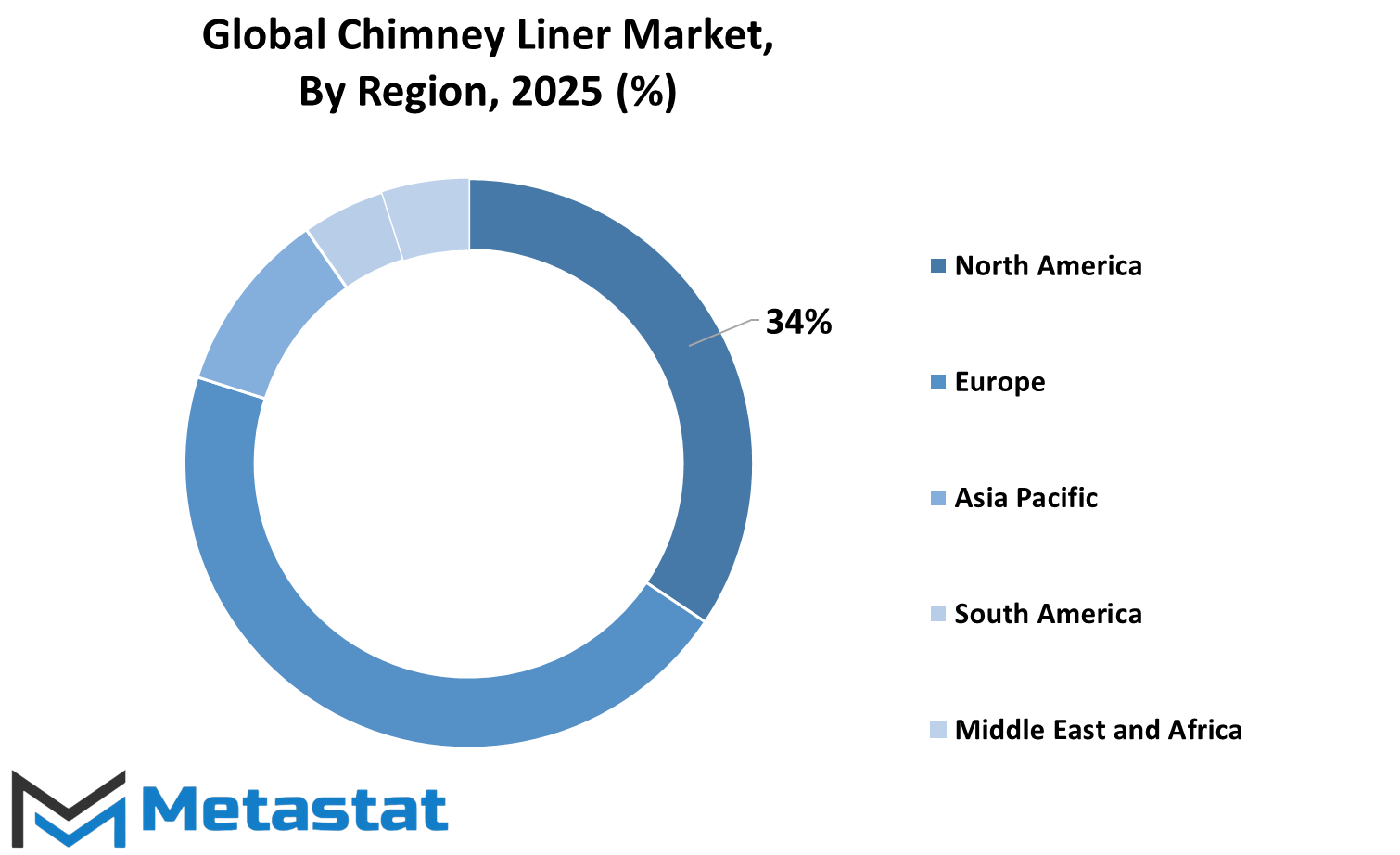
COMPETITIVE PLAYERS
The global market for chimney liners is expanding with increasing homeowners and businesses becoming aware of the need for maintaining efficient and safe heating systems. Chimney liners are critical in preventing homes from heat transfer and leakage of hazardous gases into living spaces. Increasingly strict safety regulations contribute to the growth of demand for quality chimney liners.
There are a few major players in this market, each offering a range of liners for various applications. Some of the top companies in the market include Selkirk Corporation, Duravent Group, Olympia Chimney Supply, Z-Flex, Hart & Cooley, Metal-Fab Inc., Chim Cap Corp, Fireside Chimney Supply, Lifetime Chimney Supply, Chimney Liners USA LLC, and HomeSaver. The companies in the market emphasize innovation, utilizing new materials that provide better performance and longer lifetimes for chimney liners.
Several factors are pushing the growth of this market. First, growing awareness about fire safety and the importance of regular maintenance of chimneys has become the biggest factor for the growth of this market. Now, many home owners understand that a well-functioning liner prevents creosote buildup, which could cause dangerous chimney fires. Increasing demand for chimney relining solutions has also come with aging infrastructure in many regions as older homes need to be upgraded to modern safety standards.
The types of chimney liners vary, with stainless steel, aluminum, and clay tile being the most common available. Stainless steel liners are commonly used as they have durability and can tolerate high temperatures. They are used more in residential and commercial applications. Clay tile liners are traditional but maintain less since they crack over time. Aluminum liners are less expensive, but they tend to be best for gas appliances, not wood-burning fireplaces.
Another area of growth is in the eco-friendly aspects of home improvement. Environmentally conscious homeowners opt for energy-efficient heating systems, and a well-crafted chimney liner will ensure safe and efficient functioning of such systems. This process calls for sustainable solutions using novel materials and designs that maximize insulation while minimizing emissions.
The industry continues to grow despite the challenges. Fluctuations in raw material costs and skilled labor in chimney installation and maintenance continue to challenge the industry. Nonetheless, the increased awareness of consumers and advancement in technology will fuel demand. Firms are focusing on research and development to ensure that products are designed to be stronger and to cope with changing safety requirements.
This is why the market for chimney liners shall further grow as more individuals focus on making their homes safer while conserving energy. Consumers have, at their disposal, better solutions that improve safety and performance with leading companies focusing on innovation and quality.
Chimney Liner Market Key Segments:
By Type
- Stainless Steel Chimney Liners
- Aluminum Chimney Liners
- Ceramic/Clay Chimney Liners
- Flexible Chimney Liners
By Material
- Single-Wall
- Double-Wall
- Triple-Wall
By Installation Method
- DIY (Do-It-Yourself)
- Professional Installation
By End-Users
- Residential
- Commercial
Key Global Chimney Liner Industry Players
- Selkirk Corporation
- Duravent Group
- Olympia Chimney Supply
- Z-Flex
- Hart & Cooley
- Metal-Fab Inc.
- Chim Cap Corp
- Fireside Chimney Supply
- Lifetime Chimney Supply
- Chimney Liners USA LLC
- HomeSaver
WHAT REPORT PROVIDES
- Full in-depth analysis of the parent Industry
- Important changes in market and its dynamics
- Segmentation details of the market
- Former, on-going, and projected market analysis in terms of volume and value
- Assessment of niche industry developments
- Market share analysis
- Key strategies of major players
- Emerging segments and regional growth potential



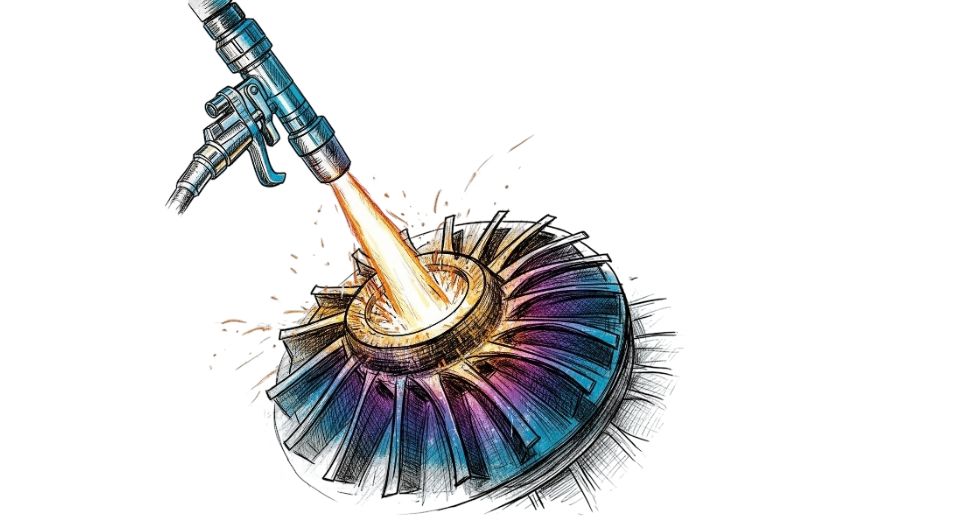
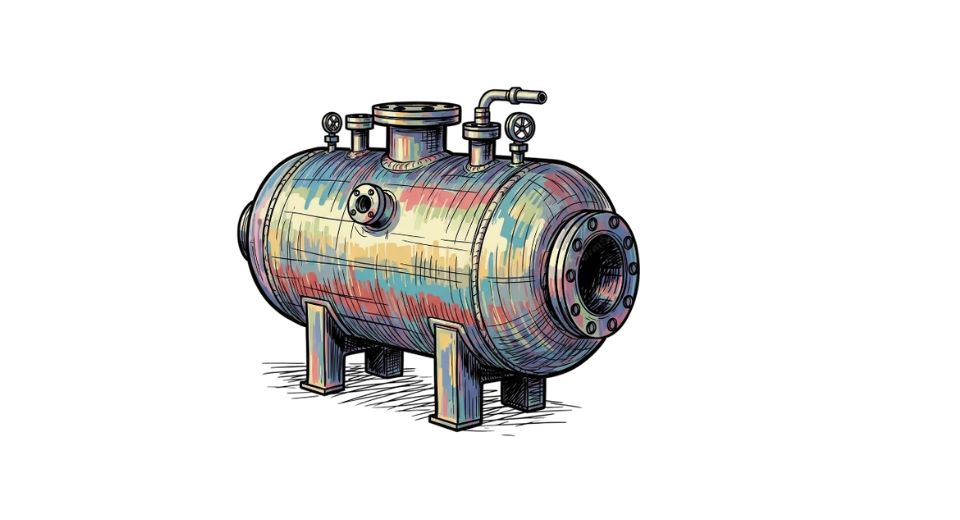

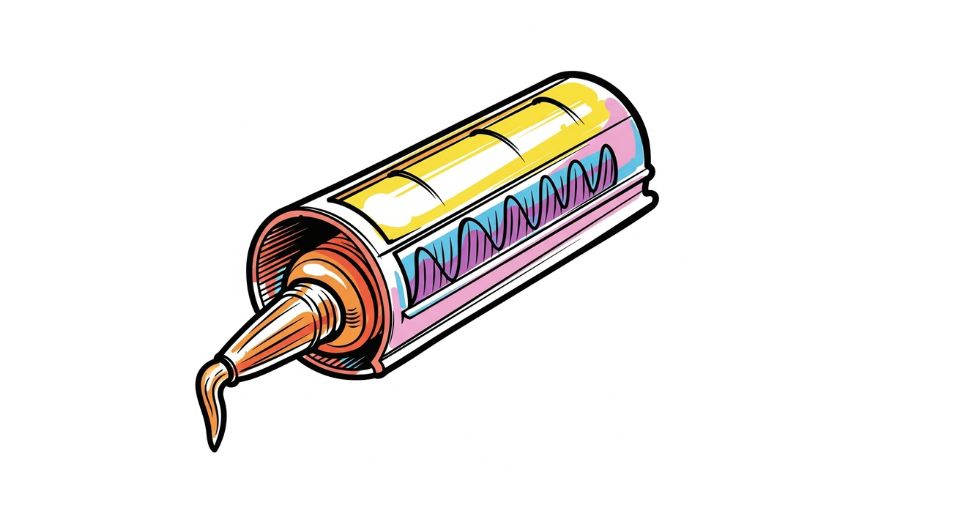

 US: +1 3023308252
US: +1 3023308252






